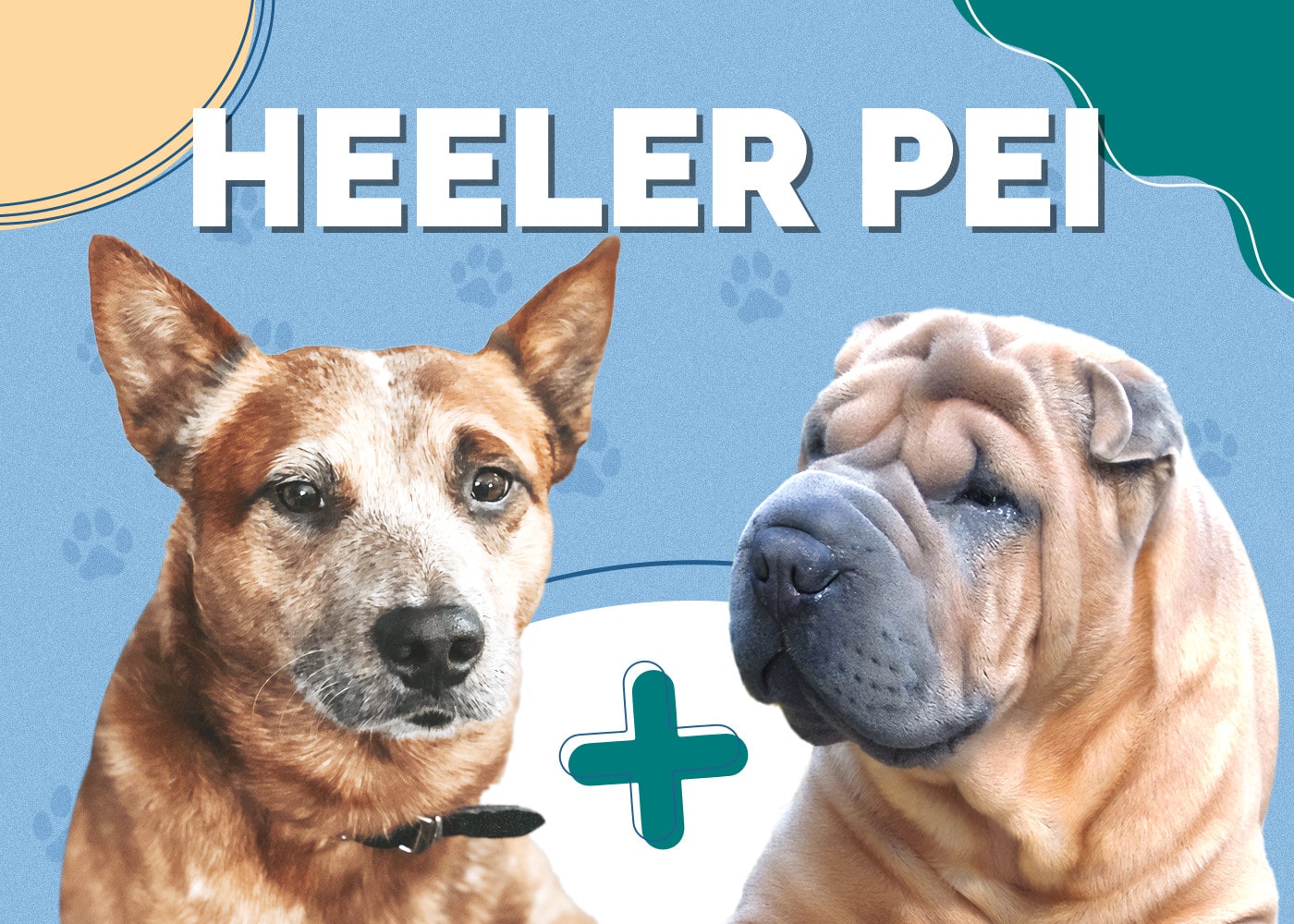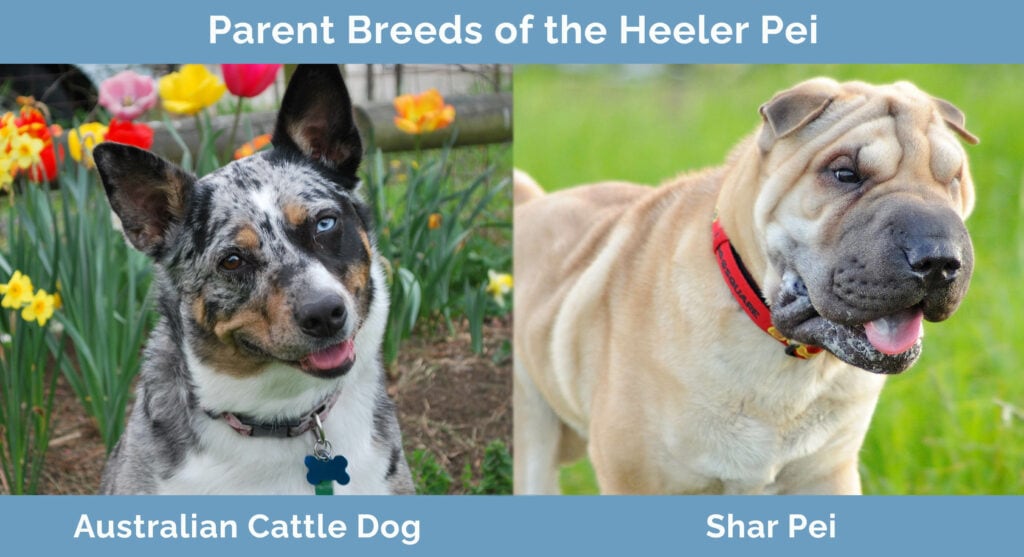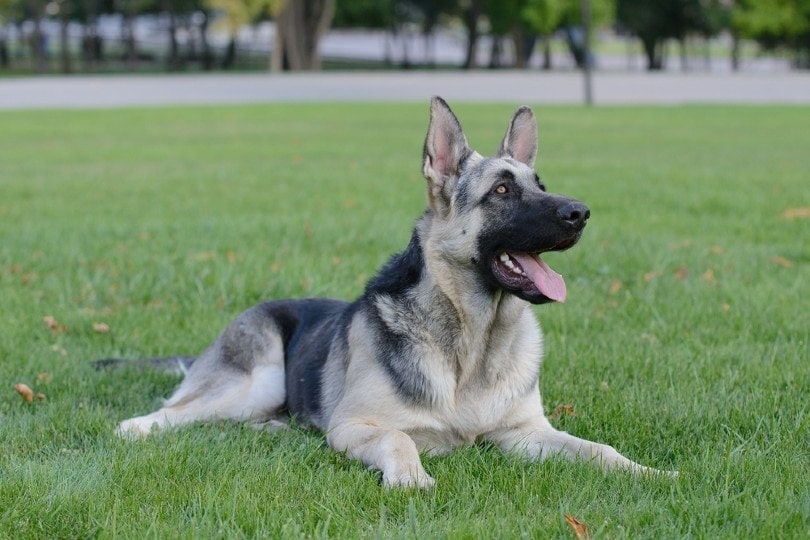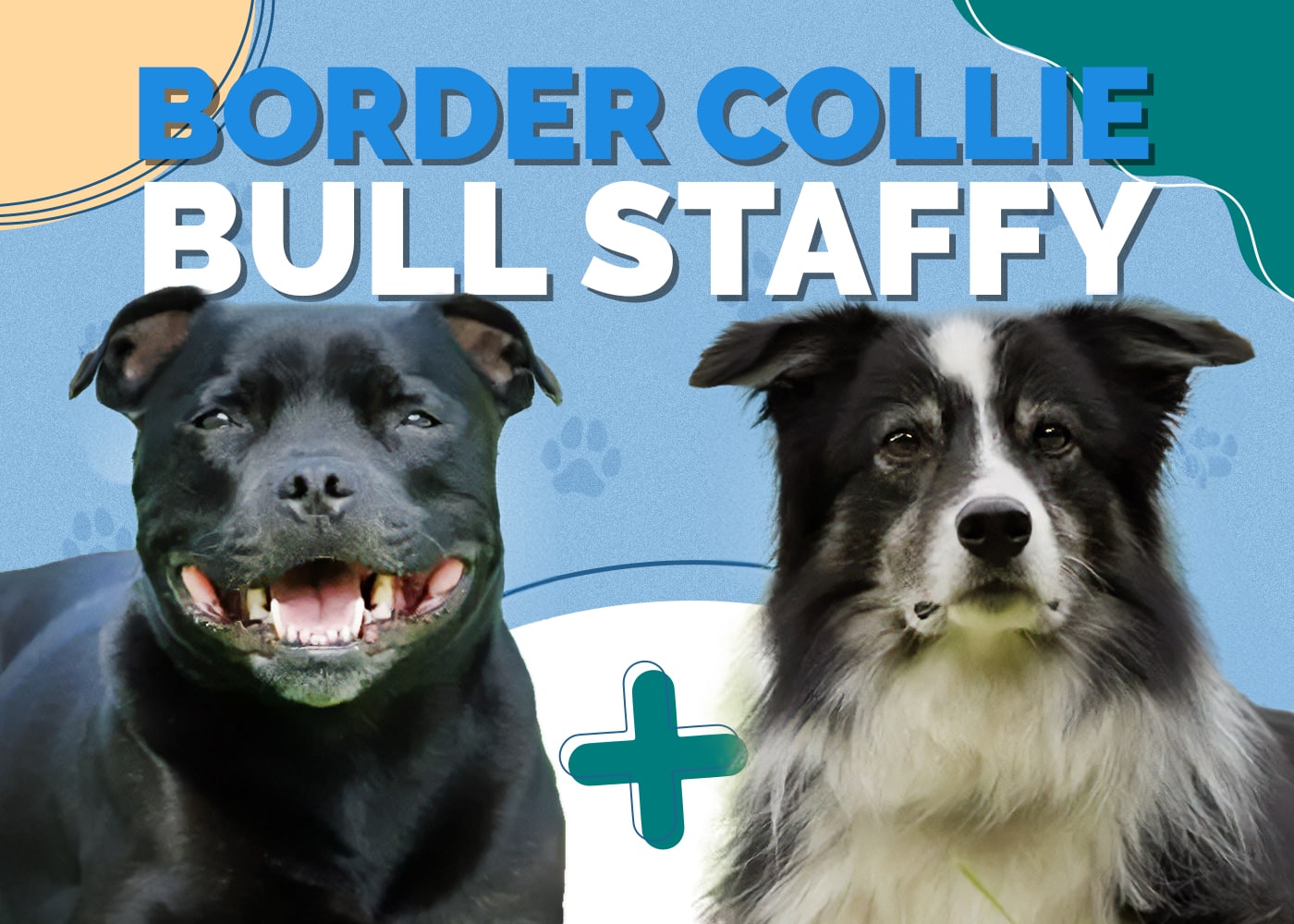Heeler Pei (Australian Cattle Dog & Shar Pei Mix): Info, Pictures

Updated on

| Height: | 18–20 inches |
| Weight: | 45–55 pounds |
| Lifespan: | 10–15 years |
| Colors: | Brown, grey, brindle, red, pied, blue |
| Suitable for: | Experienced dog owners, families with grown children, active owners |
| Temperament: | Independent, protective, loyal, hardworking, loving |
The Heeler Pei is a mix between an Australian Cattle Dog and a Chinese Shar Pei. Also known as the Shar-Cat, this is a strong, reserved dog that fits in well with active families who aren’t looking for a very affectionate dog. Heeler Peis are independent, and while they enjoy being around humans, they don’t need physical affection to be happy.
These pups are protective and alert, which makes them great guard dogs. They also have a general distrust of strangers, so they’ll be extra vigilant and can be territorial with those they don’t know.
They do make good family pets for the right family, and they often become closest to one family member in particular. We’ll go over everything you need to know about this breed so you can determine if this is the right dog for your home.
Heeler Pei Puppies
Before committing to this breed, you need to be prepared with regard to training requirements right away. These dogs are very obedient, but only to owners who are consistent and persistent with training. You should plan to start a regimented training schedule from puppyhood. This early start to training will help drill in tricks and commands, and it will also help establish dominance for you, which is essential for an independent dog like the Heeler Pei.
As part of their training as puppies, you also need to get your Heeler Pei accustomed to their grooming needs. These dogs need regular coat maintenance, tooth brushing, and cleaning of their skin folds to prevent infection. Your pup may naturally not take very well to their maintenance, so be prepared to begin grooming very early on so your pooch can learn to accept and embrace the process.
Lastly, these pups inherit a rather high energy level from their Australian Cattle Dog parent breed. They will need around an hour and a half of exercise every day, so make sure you have the time for long daily walks or runs before bringing home your Heeler Pei.
3 Little-Known Facts About the Heeler Pei
1. They have an extensive history.
While the hybrid Heeler Pei is believed to be a relatively new mixed breed, this dog’s parent breeds date back many centuries. Australian Cattle Dogs are believed to have originated in Australia in the 1800s, and the Chinese Shar Pei can be traced back to about 200 B.C. when they were a popular breed with the royalty of the Han Dynasty! Chinese Shar Peis are often listed as one of the top ten oldest dog breeds in the world.
2. One of their parent breeds almost became extinct.
Despite the Shar Pei’s popularity for hundreds of years, the breed nearly became extinct during the Chinese Communist Revolution in the mid-1900s. Thankfully the Chinese Shar Pei was saved by a breeder in China who formed a movement to keep the dog’s long history from coming to an end.
3. They come from a long line of working dogs.
Both of this hybrid’s parent breeds were originally bred as working dogs. The Australian Cattle Dog unsurprisingly was bred in Australia to herd cattle, and the Chinese Shar Pei was originally bred to hunt as well as to guard farms. The Heeler Pei’s long line of hardworking pups means they will love having a job to do, whether that’s herding or guarding your home and family.

Temperament & Intelligence of the Heeler Pei 🧠
Heeler Peis are loyal and protective, and sometimes so much so that they come across as very serious and independent dogs. They enjoy being around their owners, but they’re happiest when they’re at work. They have a serious and focused attitude, so they aren’t often affectionate.
These pups are often quiet and reserved, and they have mellow personalities. However, this doesn’t mean they don’t like playtime! While they may not be up for snuggling or cuddling, they will love playing fetch and other active games with you.
Are These Dogs Good for Families? 🏡
The Heeler Pei can make an excellent family dog for the right family. They are highly protective and extremely loyal, and they will go out of their way to keep you, your family, and your home safe.
It’s important to know that these dogs are not very affectionate or particularly attentive, but their independence doesn’t mean they don’t love you! They have a lot of love to give in their own way to all of their family members, but one, in particular, will likely be your dog’s favorite and may even get some rare Heeler Pei affection.
These pups are good with children, but they do best in homes with older children. They can get a bit aggressive if a young child plays too rough with them or interferes with their feeding. They will never intentionally hurt a family member, but they can growl and nip if they’re antagonized by young kids. You should always monitor your kids when playing with your dog.
Because they can be distrustful of strangers, you should plan to keep your pooch separated from any play dates your children may have. Rough play between kids can sometimes be perceived as a threat, and your Heeler Pei will quickly step in if they sense any danger.
Does This Breed Get Along with Other Pets? 🐶 😽
Heeler Peis normally get along with other dogs that they live with, but those they meet on walks and other dogs at dog parks can sometimes lead to an issue. The Heeler Pei is confident and strong-willed, so they can be a bit aggressive toward other dogs, especially if they play too rough. They may not be too keen on puppies or young dogs biting their ears or tail, and they tend to let any dog know what they don’t like in a firm, but usually non-harmful way.
This breed does inherit a fairly strong prey drive from their Australian Cattle Dog parent breed, so while they usually get along with other familiar dogs, they aren’t recommended for homes with cats or other small animals. Smaller pets may catch your pup’s eye and lead to some unwelcome chasing.
 Things to Know When Owning a Heeler Pei
Things to Know When Owning a Heeler Pei
Food & Diet Requirements 🦴
Although the Heeler Pei is a medium-sized dog, they’re very active even outside of dedicated exercise time, so they will have a big appetite. Expect to feed your dog around three to four cups of dry dog food every day, and plan to split this between two or three meals.
Because these dogs have such abundant energy, you’ll want to take extra care to ensure you’re providing your pooch with high-quality food that includes multiple whole protein sources. Proper nutrition will help keep your pup healthy, active, and happy.
Exercise 🐕
Despite the Heeler Pei’s calm and laid-back demeanor, they are very active dogs that will require about 90 minutes of dedicated, vigorous exercise every single day.
Your Heeler Pei will love being active at all times of the day. Even when they’re not on a walk or run, you’ll find that they enjoy playing fetch, running in your yard, or patrolling and protecting your home. You need to be aware of their abundance of energy and never assume they don’t need dedicated exercise just because they’re energetic throughout the day. They will happily run and play for hours on end before and after their necessary daily exercise.
Training 🦮
Heeler Peis are very loyal, which is usually a trait that leads to an obedient dog. However, these pups are also very independent and can be stubborn, so they are not recommended for inexperienced dog owners. They will challenge your dominance regularly, so owners who can establish and maintain leadership will be best suited for this breed. For the right owner, these are very obedient dogs.
Heeler Peis come from a long line of working dogs, so they excel at agility training and competition where they feel they have value and fulfillment. It’s a good idea to incorporate some form of work into your Heeler Pei’s training to introduce a little fun and excitement. This will also help establish you as the dog’s leader.
Grooming ✂️
Your Heeler Pei will have short but very dense fur, so above all else, you need to be prepared for shedding and a whole lot of it! Heeler Peis shed year-round, but they go through heavy shedding twice a year leading into summer and winter. You need to be prepared to clean up and vacuum often if you commit to this breed.
While you won’t avoid shedding altogether, regular brushing will help cut down on it. Plan to brush your pooch about once a day to remove loose fur and keep their coat shiny and free of matting.
Bathing can occur once a month or once every six weeks, but extra attention needs to go toward your dog’s skin folds outside of regular bathing. Like all Shar Peis and Shar Pei hybrids, this mixed breed inherits the breed’s quintessential wrinkly skin. It’s adorable, but it also needs to be unfolded and cleaned on a regular basis—about once every other day—to prevent infection and irritation.
Beyond coat and skin maintenance, you should keep your dog’s nails clipped and teeth brushed to avoid infection as well. You also need to wipe their ears clean once a week or so to prevent infection and wax build-up.
Health and Conditions ❤️
As a mixed breed, the Heeler Pei inherits fewer health issues than most purebred dogs. They are generally hearty dogs, but they can still have some health problems that you’ll want to watch out for. Additionally, you should schedule regular checkups with your vet just to make sure your pooch isn’t developing any of these more common ailments.
- Patellar luxation
- Glaucoma
- Entropion
- Progressive retinal atrophy
- Hip dysplasia
- Elbow dysplasia
- Hypothyroidism
 Male vs Female
Male vs Female
For the most part, both sexes will be about the same in temperament with only some minor differences. Male Heeler Peis will usually be a bit more distrusting of strangers, and they tend to be more territorial and food-aggressive. Both genders will have a high energy level, but you may find that males will be a bit more energetic and playful. Male dogs are also a little more likely to have issues with other dogs than females are.
Final Thoughts
The Heeler Pei is an uncommon dog breed, but they make wonderful family pets for the right owners. They’re highly protective and loyal, and they will happily step between you and any perceived threat without hesitation.
They are independent, calm, and reserved, which many people misinterpret as disinterested or antisocial. However, they will love you and your family in their own way, and they’ll still love interacting with you during play. They can be difficult to train because they need a leader who is willing to establish dominance, but for an experienced owner, they are very obedient pups.
If you’re willing to put the necessary time in for grooming, exercise, and training, you will be rewarded with a loving, loyal, and friendly dog in the Heeler Pei.
Related Reads:
Featured Image Credit: Elisa Bulak, Shutterstock

 Things to Know When Owning a Heeler Pei
Things to Know When Owning a Heeler Pei Male vs Female
Male vs Female








